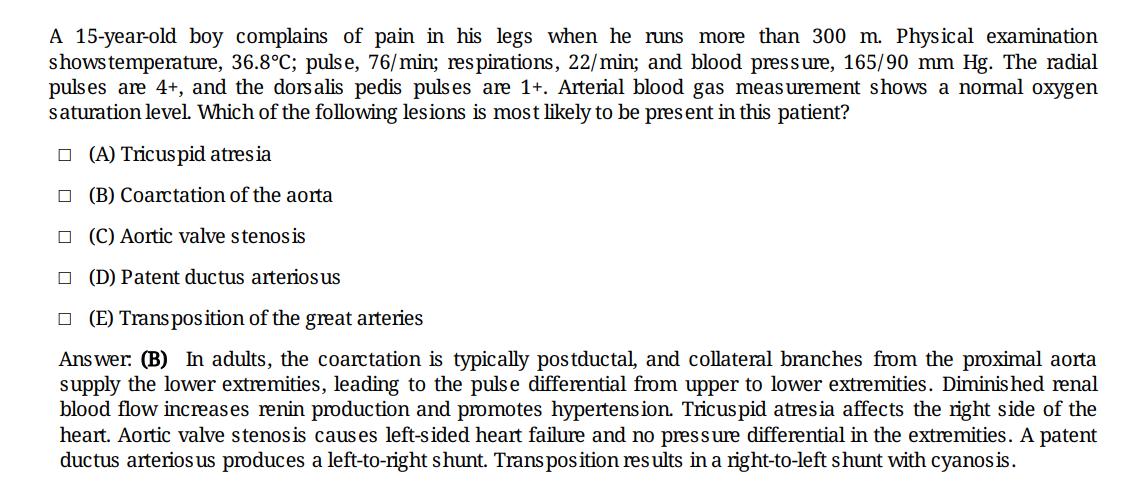Answered step by step
Verified Expert Solution
Question
1 Approved Answer
A 15-year-old boy complains of pain in his legs when he runs more than 300 m. Physical examination shows temperature, 36.8C; pulse, 76/min; respirations,

A 15-year-old boy complains of pain in his legs when he runs more than 300 m. Physical examination shows temperature, 36.8C; pulse, 76/min; respirations, 22/min; and blood pressure, 165/90 mm Hg. The radial pulses are 4+, and the dorsalis pedis pulses are 1+. Arterial blood gas measurement shows a normal oxygen saturation level. Which of the following lesions is most likely to be present in this patient? (A) Tricuspid atresia (B) Coarctation of the aorta (C) Aortic valve stenosis (D) Patent ductus arterios us (E) Trans position of the great arteries Answer: (B) In adults, the coarctation is typically postductal, and collateral branches from the proximal aorta supply the lower extremities, leading to the pulse differential from upper to lower extremities. Diminished renal blood flow increases renin production and promotes hypertension. Tricuspid atresia affects the right side of the heart. Aortic valve stenosis causes left-sided heart failure and no pressure differential in the extremities. A patent ductus arteriosus produces a left-to-right shunt. Trans position results in a right-to-left shunt with cyanosis.
Step by Step Solution
★★★★★
3.36 Rating (149 Votes )
There are 3 Steps involved in it
Step: 1
The detailed ...
Get Instant Access to Expert-Tailored Solutions
See step-by-step solutions with expert insights and AI powered tools for academic success
Step: 2

Step: 3

Ace Your Homework with AI
Get the answers you need in no time with our AI-driven, step-by-step assistance
Get Started


